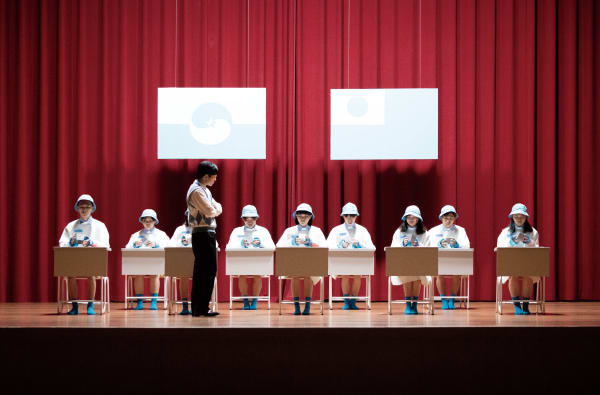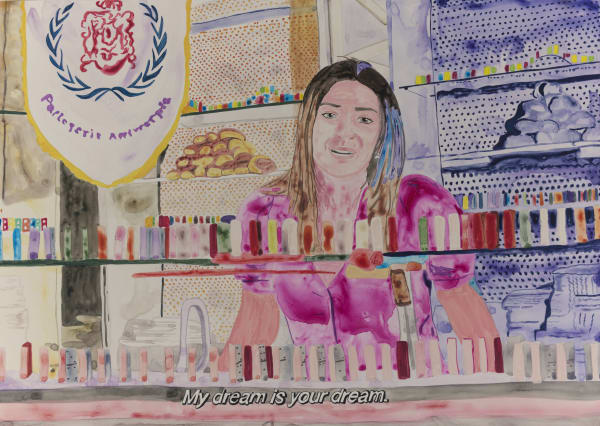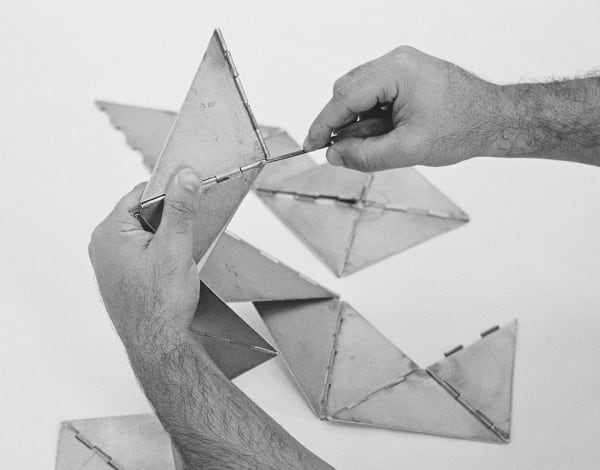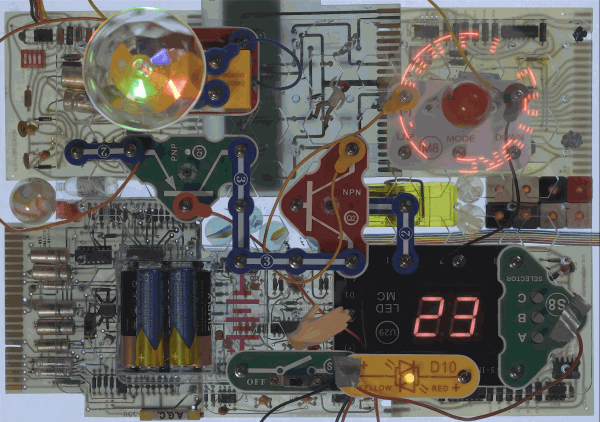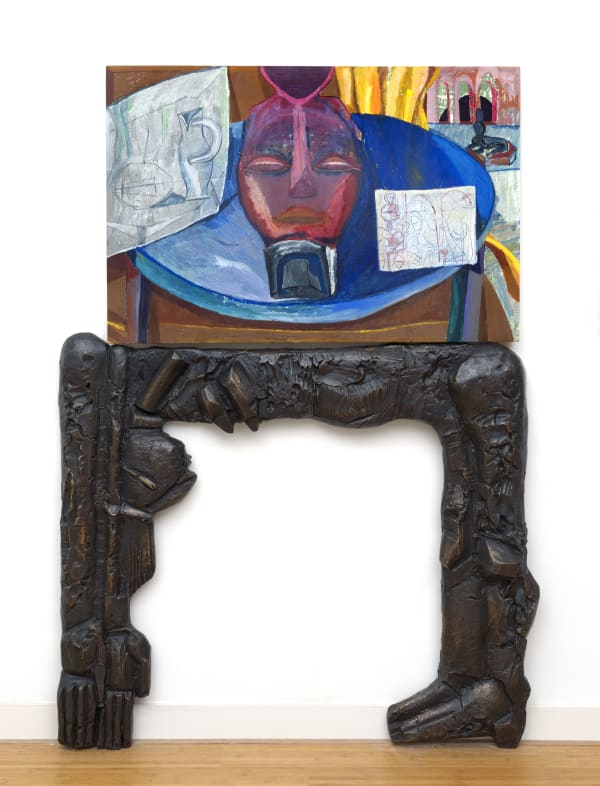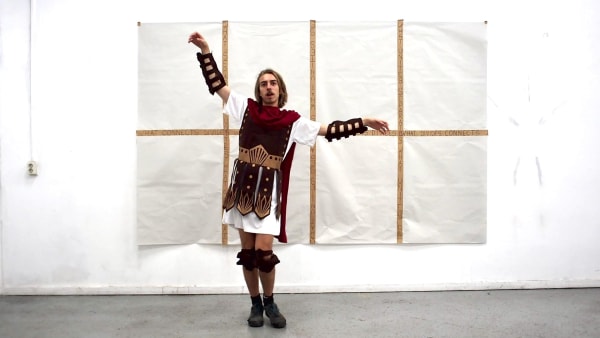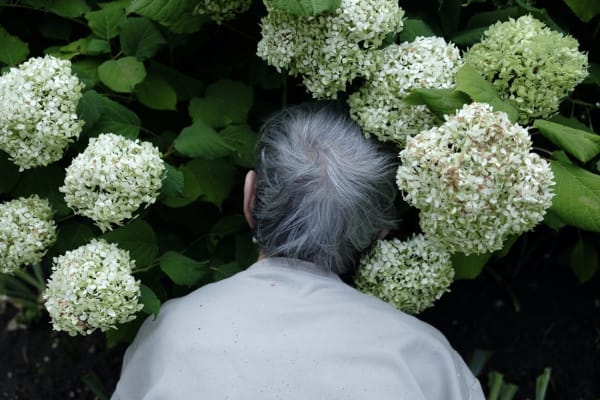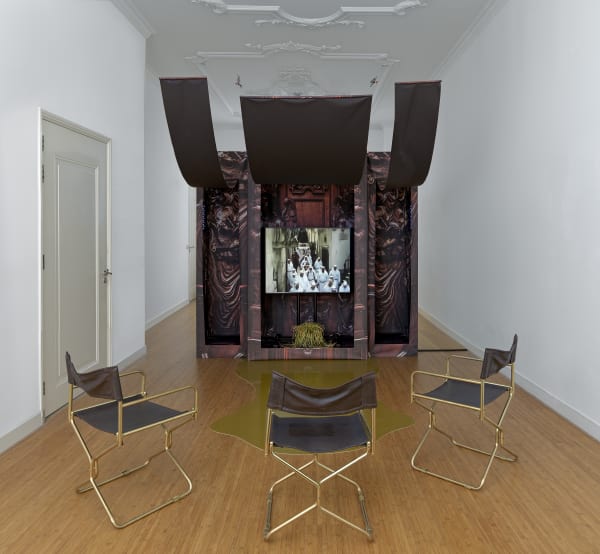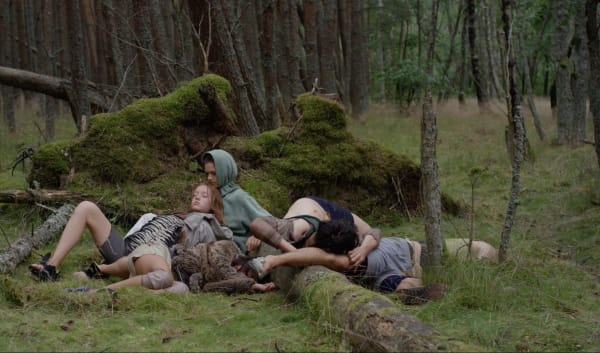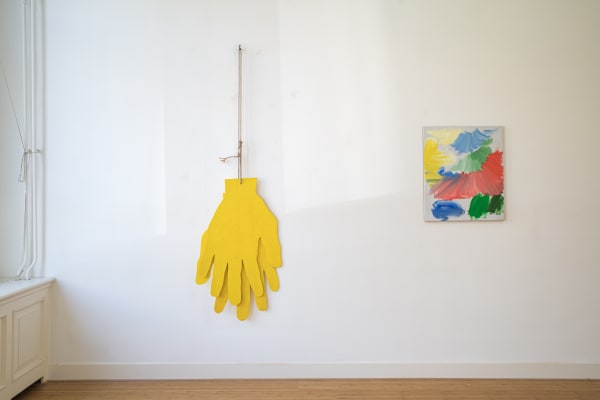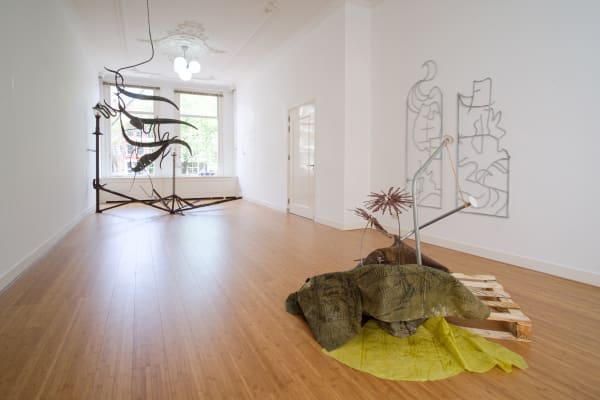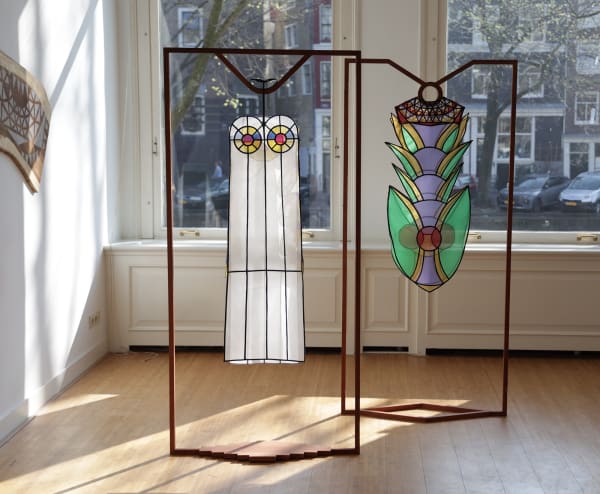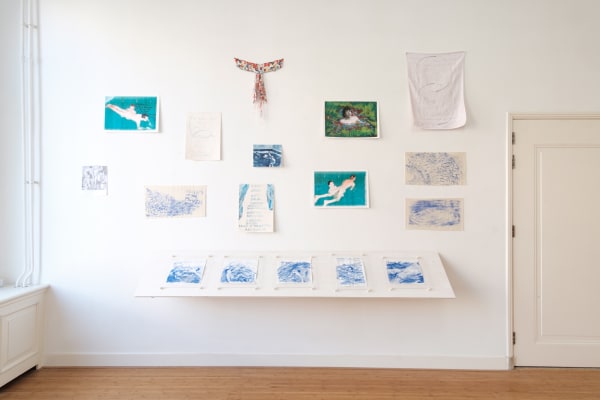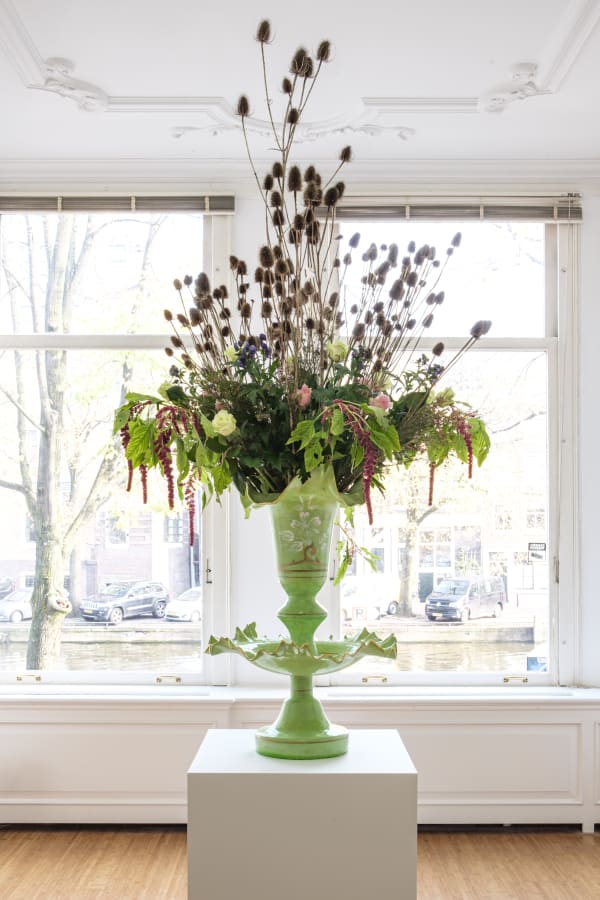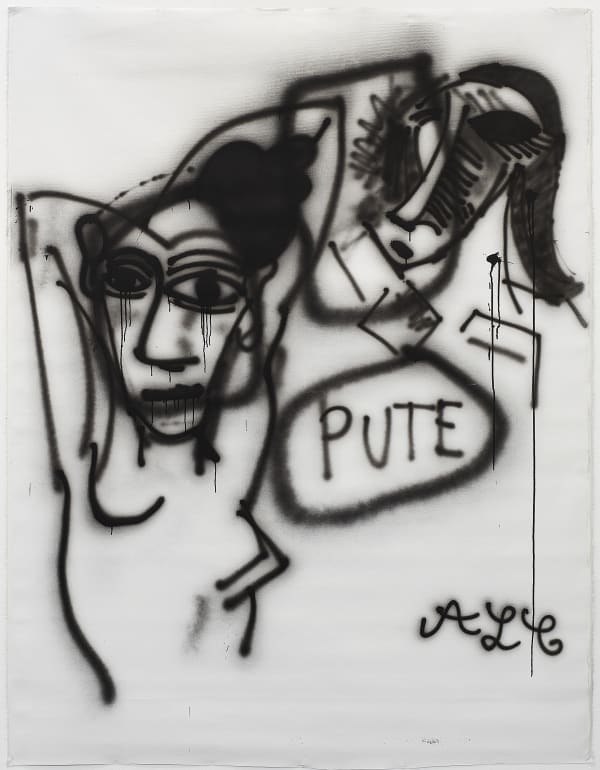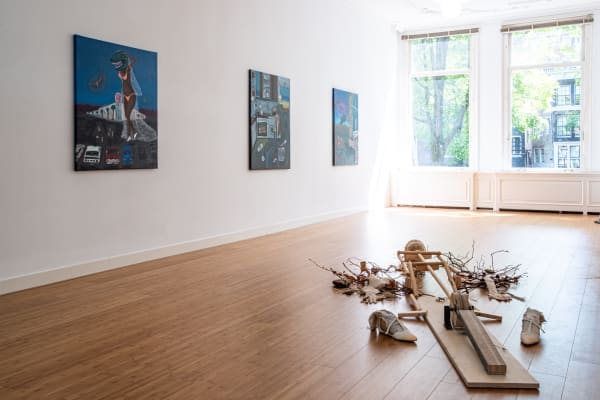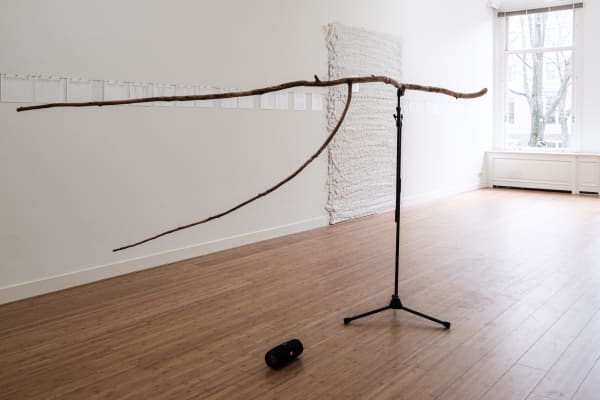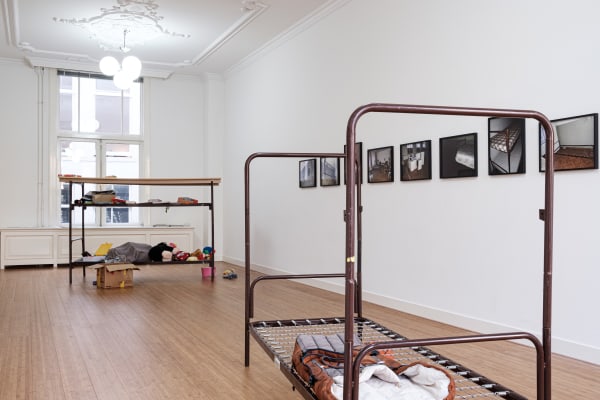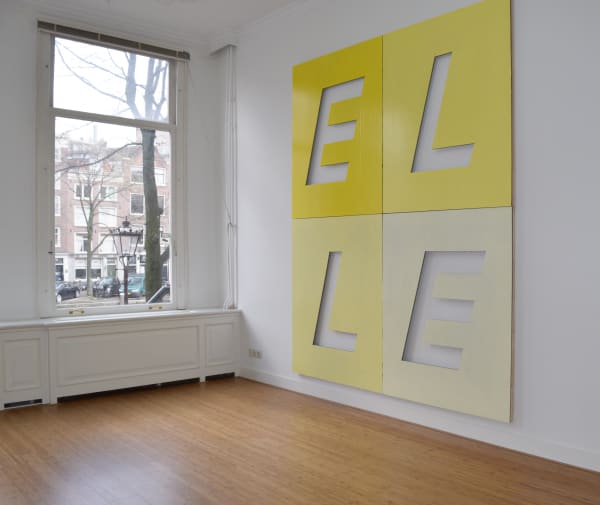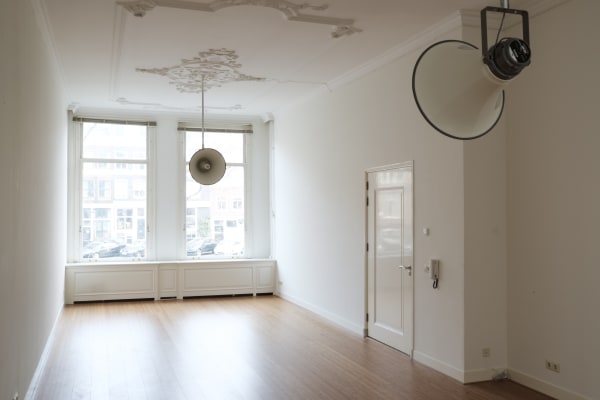Forthcoming
-

NoTav Tracks: Two Evenings
26 - 27 Jul 2025 Ellen de Bruijne PROJECTS is pleased to host a new collaborative project initiated by Jeremiah Day. The gallery welcomes this group of 5 collaborators for a weekend with two different programs, including performance, screening and discussion, taking as its point of departure the Italian social and political movement “NoTav.” “NoTAV”... Read more -

Erkka Nissinen | Work, home, nature, museum, journalism, past, future, economy, time, truth, and Olympics
2 - 23 Aug 2025 We are pleased to present a solo exhibition by Erkka Nissinen featuring a new series of drawings, animations, and live action videos. Nissinen’s drawings are depictions of fictional events that oftentimes expand into animations and videos. They picture stories that take place in social institutions such as the workplace, home,... Read more
Past
-

Su Hui-Yu | The Space Warriors and the Digigrave
22 May - 12 Jul 2025 We are pleased to present the first solo exhibition by Su Hui-Yu in the gallery. From 1984 to 1987, one of the only three government TV channels in Taiwan, CTS, broadcasted “Space Warriors”, an outlandish sci-fi superhero series adapted from the Japanese series “Super Sentai” and “Gavan”. After a three-year... Read more -

Kathe Burkhart | Bloom and Doom
22 Mar - 17 May 2025 Ellen de Bruijne PROJECTS is delighted to present Bloom and Doom , the first solo exhibition by Kathe Burkhart in the gallery. Kathe Burkhart is an interdisciplinary artist and writer based between New York City and Amsterdam. Working since the early 1980s, Burkhart has consistently and frankly engaged gender roles,... Read more -

Camila Oliveira Fairclough | Live, Love, Laugh
11 Jan - 1 Mar 2025 The work of Camila Oliveira Fairclough (Rio de Janeiro, 1979) playfully navigates the contours of figuration and abstraction within the imagery and language of popular culture. She borrows from everyday mundanity and translates it into a painterly practice that likes to toy with what canonically is and what is not... Read more -

Uta Eisenreich | IT GOES WITHOUT SAYING: a glossary of signs
11 Jan - 1 Mar 2025 Uta Eisenreich ’s presentation will feature two video works exploring the poetic space between sign and meaning. The first, IT GOES WITHOUT SAYING (2024), is a two-screen video installation of a glossary of hand signs. Structured like a slide show, the work features signs the artist has learned from her... Read more -

Lucile Desamory | Still Film
9 Nov - 21 Dec 2024 In Lucile Desamory’s practice as a filmmaker, visual artist, and performer, Still Film is conceived as a reflection on cinema through painting. In Desamory’s work, painting and filmmaking are always found in a mutualistic relationship, pushing beyond a clear-cut distinction between the two disciplines and questioning their artistic and material... Read more -

Kasper Akhøj | Bichos
6 Sep - 2 Nov 2024 In his new series of works Untitled (Bichos) ( 2024), Kasper Akhøj documents the weekly conservation protocol for Lygia Clark’s Bichos– also known as Critters–a series of hinged, unstable sculptures created in aluminum by the Brazilian artist beginning in 1959. Untitled (Bichos) includes a series of analogue, black and white... Read more -

Sergei Eisenstein | The rhythm of ecstasy: the sex drawings, 1931–1948
12 Jul - 3 Aug 2024 Ellen de Bruijne PROJECTS is pleased to present an exhibition of the sex drawings of pioneering film director Sergei Eisenstein (Riga, 1898—Moscow, 1948), opening July 12 from 5 to 7pm. Drawing was fundamental to Eisenstein's filmic and theoretical practices—if one should differentiate them. Starting from an early age, drawing was... Read more -

Jannie Regnerus | Tokyo Encore
30 May - 6 Jul 2024 After playing a piano concert in Tokyo in 1976, Keith Jarrett gave an encore. On the spot, he improvised a piece that lasts no longer than nine minutes, and within this condensed, intuitively driven piece the musician gropes for emotions as pure joy, tenderness to grief and love. In the... Read more -

Werker Collective | A Gestural History of the Young Worker, Print Punch
10 - 25 May 2024 Ellen de Bruijne PROJECTS presents an exhibition of Werker Collective’s work A Gestural History of the Young Worker, Print Punch. Read more -

Kubilay Mert Ural | Teletext Lover
23 Mar - 4 May 2024 In Kubilay Mert Ural’s work, uncanniness is a muscle exercised in an obsession with blurring the lines between the familiar and the unfamiliar, the ordinary and the extraordinary, the absurd with the reasonable. His practice threads painting, sculpture, video, and performance around a highly imaginative stream of consciousness that populates... Read more -

Tincuta Marin | Purring Figure
10 Feb - 16 Mar 2024 Ellen de Bruijne PROJECTS is delighted to present the work of Tincuta Marin in her first solo exhibition in Amsterdam. Read more -

Daniele Formica | Lonely Legionaries
10 Feb - 16 Mar 2024 Ellen de Bruijne PROJECTS is delighted to present a selection of work by Daniele Formica under the title Lonely Legionaries in the backspace of the gallery. Opening on February 10, simultaneous to Tincuta Marin's solo opening Purring Figure, from 3 to 7pm. Lonely Legionaries is about singularities in and out... Read more -

Art and Solidarity Collective: Rainbow Soulclub | Rearrangement of Priorities #16: Blessings
2 Dec 2023 - 27 Jan 2024 Ellen de Bruijne PROJECTS is delighted to present Rearrangement of Priorities #16: Blessings , an exhibition by Art and Solidarity Collective: Rainbow Soulclub , a collective founded by artists Saskia Janssen and George Korsmit eighteen years ago in Amsterdam. The collective came to existence after Janssen and Korsmit visited the... Read more -

Ksenia Galiaeva | Unreal Estate
29 Oct - 25 Nov 2023 For more than twenty five years, Ksenia Galiaeva has been photographing her parents in the seemingly paradisiacal surroundings of her familiy’s Russian summerhouse in an attempt to influence her own memory and her family history. Due to her parents’ advanced age and the Russian invasion of Ukraine, Galiaeva is drawing... Read more -

Dora García | Insect, History, Mirror, Revolution
9 Sep - 21 Oct 2023 Ellen de Bruijne PROJECTS is delighted to announce Insect, History, Mirror, Revolution , a new solo exhibition by Dora García, inaugurating the new gallery season on the 9 of September from 5pm onwards. Dora García will debut her newest work Insect Vocabulary and present it alongside her most recent film... Read more -

Simnikiwe Buhlungu | suggestures among us (Interlude)
2 Jun - 29 Jul 2023 Bookmarking a larger project that explores ways in which we come to know, suggestures among us (Interlude) exists as a moment compiled by ‘suggestures’, wherein inconspicuous encounters, looped socio-historical tangents, hazy familiarities and shallow depths ultimately ask, “what’s happening in a pause that we may have missed before?” Through textual... Read more -

Pauline Curnier Jardin | Le Lente Passioni
15 Apr - 20 May 2023 Read more -

Anne-Lise Coste | FRONTEX FACHO MACHO MANAGEMENT
10 Mar - 8 Apr 2023 Read more -

Semicolons
14 Jan - 4 Mar 2023 We are kicking off 2023 with a special film program. Semicolons is a screening program curated by Sergi Rusca that seeks to engage different artistic practices in conversation through film and video, with the participation of 13 artists––both represented and guest artists. Every week, two films have been paired following... Read more -

Jeremiah Day | Provisional Temple of Semi-Failed Resistance Artist Fighter Dreamers
12 Oct - 24 Dec 2022 In line of Jeremiah Day’s interest in affirmative political examples, his new work brings together a long-term research investigation into the life and work of Willem Arondeus, a largely forgotten figure in the history of Amsterdam. Provisional Temple Of Semi-Failed Resistance Artist Fighter Dreamers attempts to transform the gallery space... Read more -

Klaas Kloosterboer | Handen en Voeten
2 Sep - 29 Oct 2022 Let us build a game metaphor. First, an understanding of game: in a determined space and time, a social system in which to explore a distinctive perspective on the relationship between rules and constraints. Game metaphors are appealing because they extend an invitation to a deeper understanding of rule-governed systems... Read more -

Heading into the forest, never to walk back again
An exhibition with Michelle Chang Qin and Mickey Yang, curated by Sergi Rusca 25 Jun - 30 Jul 2022 In J. G. Ballard’s novel The Crystal World (1966), doctor Edward Sanders begins a journey through a Cameroonian forest to reach a leprosy facility to pay a visit to his friends. With time, he becomes aware of a strange phenomenon occurring in the forest: the nature, animals, and even humans... Read more -

Linus Bill + Adrien Horni | Midlife Painting
11 May - 18 Jun 2022 There is always more than meets the eye in the work of the artist duo Linus Bill + Adrien Horni (both b. 1982, CH). What is seemingly a conventionally looking abstract painting bears extensive processes of transformation, revaluation, and experimentation that subvert painting itself. Despite their appearance, it could be... Read more -

Mauricio Limón de León | Les petits pois sont verts... Les petits poissons rouges...
26 Mar - 30 Apr 2022 An unassuming stained-glass window in Adriana González Hulshof’s house in Amsterdam was the starting point for the collection of haute couture dresses designed by Mauricio Limón and Adriana González Hulshof realized by Atelier Caraco in Paris. Westerstraat 87 is one in a growing collection of flimsy open edition dresses, each... Read more -

For every word an emergence of entropy and a call for reconstruction
12 Feb - 19 Mar 2022 A group show with Anne-Lise Coste, Daniele Formica, Dora García, and Klaas Kloosterboer Curated by Sergi Rusca This exhibition is articulated as an ontological opening, [1] that is, a proposal where artistic practices enact a multiplicity of aesthetic and conceptual overlaps around language. The displayed artworks allow for a conversation... Read more -

Lara Almarcegui | Stopped Quarry
27 Nov 2021 - 15 Jan 2022 Following her extensive artistic practice around the exploration of the material aspects of land and urban space, Lara Almarcegui presents two new works around the extraction of natural resources and the physicality of the land its constant transformation and arbitration. Read more -

Tyna Adebowale | She called me woman
16 Oct - 20 Nov 2021 Tyna Adebowale’s multidisciplinary artistic practice has a strong focus on societal processes and constructions regarding gender, queerness, ostracism, community, and identity politics. With an interest inthe gender fluidity in the African cultural and spiritual histories prior to colonisation, the artist reflects on contemporary Nigerian society and its diaspora and its... Read more -

Uta Eisenreich | As If
3 Sep - 9 Oct 2021 Uta Eisenreich’s visual world is one with many worlds within. In her long-awaited new book AS IF and the eponymous solo show at Ellen de Bruijne PROJECTS, Uta Eisenreich explores representation and language, following her interest in perception and illusion. Her photographic still lifes bear a particular sense of logic;... Read more -

A future unknown to me except as the whisper of a plea
17 Jul - 28 Aug 2021 A group show with Simnikiwe Buhlungu, Anne-Lise Coste, Daniele Formica, Erin Johnson, and Maria Pask. Curated by Sergi Rusca. A future unknown to me except as the whisper of plea reflects on the confrontational duality of desire and caution in a time of coping with the impactful shifts that have... Read more -

Laëtitia Badaut Haussmann | As if a house should be conceived for the pleasure of the eye, she says
29 May - 10 Jul 2021 The manner in which we dwell is the manner in which we are. Where we live is not an objective, unbiased space; on the contrary, it has been constructed and designed in ways which, either consciously or unconsciously, obey specific biopolitical systems of gender and sexuality. What constructions of the... Read more -

Daniele Formica | Boys by the Pool
17 Apr - 22 May 2021 To swim in a pool of material belongings, plunging, drifting, whirling. The water is glistening, and so are the boys, staying afloat in the quiet streams of aquatic nostalgia. Fidgety silhouettes merge into one another, blurring the limits of their bodies. The water is inviting yet challenging, for its fluid... Read more -

Lucile Desamory | My People (Heaps and Piles)
6 Mar - 10 Apr 2021 Lucile Desamory presents a new solo show at Ellen de Bruijne PROJECTS. Following her multifaceted practice, Lucile Desamory presents a selection of sculptures, drawings, photographs, and embroidery that seek to visualize the many layers in objects and challenge their understanding as inanimate entities. Read more -

Maria Pask | Lord Lift Me Up
6 Nov - 19 Dec 2020 Maria Pask | Lord Lift Me Up, Ellen de Bruijne PROJECTS Read more -

Anne-Lise Coste | Poème, Pute, Police
5 Sep - 24 Oct 2020 Anne-Lise Coste Poème, Pute, Police Read more -

Summer Exhibition
27 Jun - 1 Aug 2020 A vicious cucumber, a well accessorized sausage, and a fierce woman who rises from her grave to ask for money she should have earned during her life: you can find these apparent absurdist elements in the Summer Exhibition at Ellen de Bruijne PROJECTS. The exhibition includes works of Kubilay Mert... Read more -

Pauline Boudry / Renate Lorenz | Staying with the Trouble
14 Mar - 20 Jun 2020 Citing the title of Donna Haraway’s last book, Boudry/Lorenz refer to the trouble of cohabitation, of “living and dying together on a damaged planet“. On this background, the exhibition brings up negotiations around the concept of the ‘human’, the question of agency, and the right to have rights. Read more -

Klaas Kloosterboer | 2 steps 3 steps
18 Jan - 7 Mar 2020 Ellen de Bruijne Projects is pleased to announce “2 steps 3 steps” a solo by Klaas Kloosterboer with paintings, semi-paintings and paintings in disguise. Klaas Kloosterboer is a conceptual painter whose art takes variable forms. In his practice he pursues a kind of 'expanded painting'. Kloosterboer makes pieces following instructions... Read more -

Suchan Kinoshita | Platzhalter
22 Nov 2019 - 11 Jan 2020 Ellen de Bruijne Projects welcomes the acclaimed time-based-installation artist Suchan Kinoshita for her 3rd solo show in the gallery space in Amsterdam. Kinoshita's art incorporates elements from her background in experimental music and theatre, including in particular the direct connection between work and audience. Kinoshita's oeuvre reveals itself in time... Read more -

Thomas Rentmeister | Elbisbach
7 Sep - 10 Nov 2019 Elbisbach is Thomas Rentmeister's fifth solo exhibition in the gallery since his first exhibition in 1999, the initial year of Ellen de Bruijne PROJECTS. The title refers to a forgotten village in Germany, close to Leipzig where oblivion has struck, but an abandoned building with leftover goods seems to tell... Read more -

Falke Pisano | Vondervotteimittiss (the stories we tell)
25 May - 27 Jul 2019 Ellen de Bruijne Projects presents the completion of Vondervotteimittiss , a series of performances that Falke Pisano has been developing since 2017 and that have been presented at venues such as Stedelijk Museum, Manifesta Foundation (Amsterdam), Museum M (Leuven) and Petit Palais (Paris). Upon entrance to the gallery, it is... Read more -

Kubilay Mert Ural | Cheapskate
13 Apr - 18 May 2019 Ellen de Bruijne Projects is proud to present the first solo show in the gallery with new and recent work by Kubilay Mert Ural: Cheapskate. Kubilay Mert Ural’s work opens a window into the desires, frustrations, and ultimately into our needs of the present times, now. On an infinite and... Read more -

Write me a letter, Works on paper
2 Mar - 6 Apr 2019 Ellen de Bruijne Projects is pleased to present Write me a letter, works on paper . With a.o.: LINUS BILL + ADRIEN HORNI DORA GARCÍA ANNE-LISE COSTE KLAAS KLOOSTERBOER Read more -

Susan Philipsz | War Damaged Musical Instruments
19 Jan - 23 Feb 2019 Ellen de Bruijne Projects is delighted to announce 'War Damaged Musical Instruments' by the Turner Prize-winning artist Susan Philipsz. After being shown at several major museums and exhibitions spaces, including Tate Britain, we are more then proud to present this work at our new canal house gallery space. Read more



